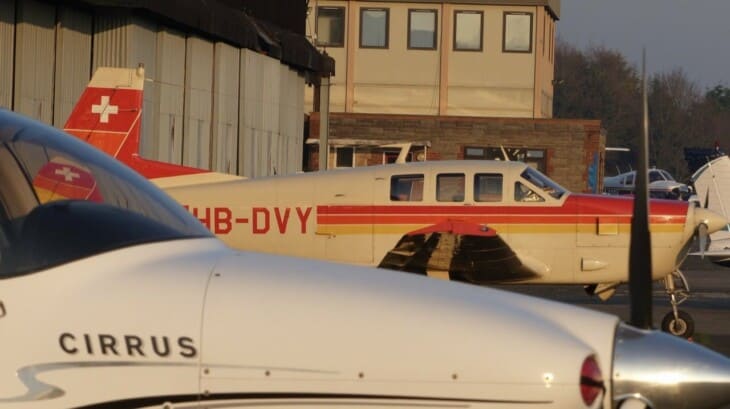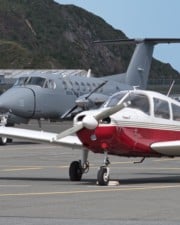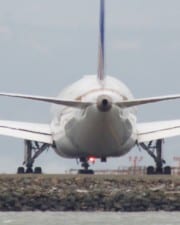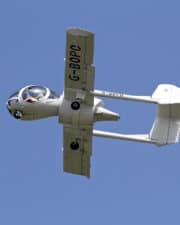Though not as famous as some of their more established competitors such as Piper and Beechcraft, both Cirrus and Mooney still produce aircraft loved by pilots and avgeeks the world over. But which is better?
Both companies have decades-long strong track records of producing aircraft. Whilst neither manufacturer has ever grown large enough to join the “Big Three” of general aviation (Piper, Cessna and Beechcraft), Cirrus is included in the much broader “Big Four”.
While both companies’ aircraft tend to compete directly with each other (save for the Cirrus Vision SF50), the two companies are very different. Cirrus is known for their low operating costs and ease of handling, whilst Mooney is known for their low acquisition costs and reliability.
In this comparison of Cirrus and Mooney, we will look at the history of both companies, their most popular aircraft, pilots’ opinions on both the two companies and their many aircraft, and with any luck, help you choose the right company for you!
History of Cirrus
Founded by brothers Alan and Dale Klapmeier (the latter of whom later went on to lead Kestrel Aircraft and later One Aviation) Cirrus Design in 1984, Cirrus Aircraft is a general aviation aircraft manufacturer based in Duluth, Minnesota.

Best known for its SR series of general aviation aircraft, including the famous SR20 and SR22 lines, Cirrus actually started out producing kit aircraft in the form of the VK-30.
Initially known for producing general aviation aircraft that employed a rather unique parachute system not found on any other GA aircraft, the company branched out into the private jet market with its Vision SF50 design in 2008.
Powered by only a single engine and by far the cheapest (new) private jet on the market, the company gained considerable attention because of the Vision SF50 and since its introduction in late 2016, the aircraft has won numerous accolades.

The brothers led the company until 2001 when they sold a majority stake to Bahraini private equity firm Arcapita Group, who in turn sold the stake to China Aviation Industry General Aircraft (CAIGA), a division of China’s state-owned AVIC aviation conglomerate.
History of Mooney
Based in Kerrville, Texas, the Mooney International Corporation, more commonly known as just Mooney, was founded in 1929 by self-taught aircraft designer Al Mooney and his older brother Arthur.
Early financial issues prevented the brothers from building their first aircraft – the M-18 Mite – until after WWII, where they capitalized on pent up demand for a fast but cheap aircraft by former military pilots returning home from war.
One of the most successful general aviation aircraft following the war, the success of the M-18 led Mooney to build many other aircraft, most notably the famed M-20, which was produced in excess of 11,000 times in nearly 60 years of production.

Though their models have often been successful, financial mismanagement by Mooney’s corporate owners have prevented the company from ever truly being profitable, causing it to pass through the hands of multiple different owners.
Not even huge capital injections, such as that done by the Soaring America Corporation (a consortium of mostly Chinese investors who acquired the company in 2013 for an undisclosed sum) have been able to bring the company to profitability.
After seven years of trying, Mooney was sold yet again in September 2020, this time to US Financial LLC. The company was gutted, production of all models were discontinued and a new CEO, Johnny Pollock, was appointed to replace the previous management.
The company does, however, still produce parts and provide ongoing support for Mooney models currently in our skies.
Cirrus And Mooney Aircraft’s Main Differences

While both companies have some strong points that make them powerhouse, some main differences make them apart.
Cirrus
Cirrus aircraft are known for their sleek design and more modern features. Unlike their Mooney counterparts, Cirrus aircraft tend to have a single engine, a glass cockpit and are built from composite materials.
As a result, Cirrus aircraft tend to have shorter wingspans as they are lighter, and extended ranges. Due to this, Cirrus aircraft tend to be more expensive than Mooney aircraft.
Mooney
On the other hand, Mooney aircraft have a far more traditional design approach. Whilst they too tend to be powered by a single engine, Mooney aircraft cockpits tend to be analogue and their shells made from aluminum.
Issues With Cirrus Aircraft
Despite a long history of producing aircraft pilots love, Cirrus aircraft are not without faults. Some of their main criticisms include:
1) Cirrus aircraft are less maneuverable
Owing to their higher MTOW and gross (usable) weights, pilots have often complained that Cirrus aircraft are less maneuverable when it comes to high-speed turns, making them less desirable to those pilots who wish to perform high speed, high-G maneuvers.
2) Cirrus aircraft are more expensive
Whilst all aircraft are expensive, a new Cirrus aircraft (prior to Mooney ceasing production of their models) cost on average 20% more than its nearest Mooney counterpart, meaning many cash-strapped pilots elect to forgo Cirrus models in favor of Mooney ones.
3) Cirrus aircraft have shorter range capabilities
For example, the Cirrus SR22T has a range of 805 nautical miles (1,494 km) whilst the Mooney Acclaim Ultra has a range of 1,200 nautical miles (2,222 km).
Similarly, the Cirrus SR22 G6 has a range of 839 nautical miles (1,558 km) whilst the Mooney Acclaim Type S has a considerably longer range of 1,280 nautical miles (2,368 km).
Issues With Mooney Aircraft
Similarly, Mooney aircraft are not infallible. Even many die-hard Mooney fans have pointed out numerous flaws in Mooney aircraft, with their chief criticism being:
1) Mooney aircraft are maintenance-intensive
This is largely due to their often advancing age and the fact most Mooney aircraft were designed in the 1960s or earlier, when aviation technology was nowhere near what it is today.
For example, the engines of most Mooney aircraft are located behind what’s called a firewall, which whilst not important technically-speaking, increases the number of hours a mechanic has to spend doing even the most basic of maintenance checks, as this has to be removed to access the engine.
All this translates to a higher number of hours billed, and thus a heftier bill.
Likewise, Mooney was also one of the first major aircraft manufacturers to experiment with turbocharged engines, which require far more maintenance to make and keep airworthy, whilst Cirrus have (for the most part) stayed away from them except in more recent times.
2) Mooney aircraft are more difficult to fly
Designed and built in the age of John Wayne and “Macho” American men, many Mooney pilots (especially those who had learned to fly long after that age had finished or are from other countries) have complained that Mooney joysticks are often much “stickier” or “harder” than their Cirrus counterparts.
3) Mooney aircraft are somewhat underpowered
As many of their models are powered by only a single turbocharged engine, Mooney aircraft have long struggled in hot and high conditions, as the engine struggles to get the higher required output to achieve the required takeoff speed.
Visibility When Flying
Mooney aircraft offer better visibility than their Cirrus counterparts, primarily owing to how Mooney cockpits have been designed.
Often sitting more forward and more centrally (from the pilot’s perspective at least), Mooney aircraft allow the pilot comparatively more peripheral vision.
In contrast, Cirrus flight decks have a slanted windshield, which whilst designed to help reduce sun glare and be less susceptible to FOD damage, can often reduce overall visibility relative to their Mooney counterpart during flight.
Pricing
For any comparison of Cirrus and Mooney to be complete, you have to talk about money: the cost not only to acquire one of their aircraft new or used, but to operate them too.
Cirrus
When it comes to the price of their aircraft, Cirrus models are by no means cheap – the price of a fairly nice house in most places – however, are generally viewed as a good deal by the aviation and piloting communities as a whole.
At present, the cost of a new standard SR20 sits at approximately $494,900 whilst a new standard SR22 costs $779,900.
Similarly, the price of used models currently sit at anywhere from $200,000 to $400,000 and $325,000 and $730,000 respectively, based on a variety of different factors such as age, condition, total number of landings and market conditions at the time you’re looking.
Assuming 450 total annual flight hours, the SR22 G6 would cost $265.48 per hour.
Mooney
Prior to ceasing production of all its models in 2019, Mooney was regarded with mixed emotions when it came to price. On the one hand, their used models were rather cheap, but their new models were considerably more expensive for what many viewed as inferior technology.
For example, when a used 1955 Mooney M20 (one of the first M20s ever made) came on the market, it regularly sold for about $15,000, a price many would consider a bargain given the price of aircraft these days, but then again, it is about 70 years old…
A more appropriate price for an “old” Mooney M20 would be about $75,000 for a late-1960s M20C Ranger, whilst those individual models in particularly good shape could sell for $90,000 and upward based on market prices from September 2022.
Conversely, a new Mooney Acclaim cost around $630,000, considerably more than its competitors, so many pilots who wanted a new Mooney opted for a used one that was only a few years old, which would set them back $500,000 if they were lucky.
The same was true for operating costs as well. Assuming 450 annual flight hours, a Mooney M20M Bravo (the closest competitor to the SR22 G6) would cost $296.89 per hour to operate.
Which one is better, Cirrus or Mooney aircraft?
To put things simply: There is no real right or wrong answer. However, when choosing an aircraft, things you should consider are…
Cost:
Cirrus aircraft are on average 20% more expensive than their nearest Mooney counterpart, both on the new and secondary markets. Mostly due to their increased maintenance costs, Mooney aircraft cost on average 12% more to operate per hour.
Performance:
Cirrus aircraft are known for their speed and ease of handling, while Mooney aircraft are known for their improved ranges and maneuverability.
Ease of Maintenance:
It’s often said that Cirrus are designed with ease of maintenance in mind. All of the major components are easily accessible, for which the same can’t be said about Mooney aircraft.
Whilst not on all models, the vast majority of Mooney models have the engines located behind the firewall, which must be removed to reach the engine.

Conclusion
As with most comparisons of different aircraft manufacturers, there is no simple answer when it comes to Cirrus and Mooney. That being said, the choice is entirely a personal one, highly dependent on what your flying needs (and more importantly preferences) are.
Cirrus, for example, prioritizes low operating costs, high levels of fuel efficiency, pilot comfort and speed, whilst Mooney prioritizes reliability and visibility above all else (not to mention low acquisition costs on the secondary market, but that’s probably accidental).
So, the best company for you is likely the one who produces aircraft that match up with what you’re most looking for in an aircraft!
Related Posts














